
http://www.iaeme.com/IJM/index.asp 98 editor@iaeme.com
International Journal of Management (IJM)
Volume 8, Issue 4, July–August 2017, pp.98–108, Article ID: IJM_08_04_013
Available online at
http://www.iaeme.com/ijm/issues.asp?JType=IJM&VType=8&IType=4
Journal Impact Factor (2016): 8.1920 (Calculated by GISI) www.jifactor.com
ISSN Print: 0976-6502 and ISSN Online: 0976-6510
© IAEME Publication
SELECTION AND RETENTION OF TALENT IN
IT INDUSTRY: A STUDY IN THE STATE OF
WEST BENGAL
Dr. Pradyumna Kumar Tripathy
Assistant Professor, Department of Business Administration
The University of Burdwan, West Bengal, India
Smt. AkanchaTrivedi
Research Scholar, Department of Business Administration,
The University of Burdwan, West Bengal, India
ABSTRACT
Employee commitment and retention has become an important strategic aspect for
the organisation today.. It is not only important to have the best and the most talented
employees, but also it is equally necessary to be able to retain them for long term
benefits of both the organisation and its people. The purpose of this paper is to throw
some light on HR strategies adopted by various IT companies in West Bengal that help
them select and retain talent in this competitive market. The study examines the
following factors: career development opportunities, effective talent management
strategies, recruitment, investment in training and development, compensation and
benefits, work life balance, culture of the organisation, leadership, communication,
image of the company, autonomy and empowerment, personal causes, role of HR head
and supervisors, work related policies and flexi time, performance appraisals and
career growth and development opportunities. It has been found that there is no
uniform strategy that shows the significant influence of all these above factors because
different organisations lay varied emphasis on these triggers depending upon their
suitability impacting retention. Based on responses of different companies,
suggestions are drawn which give a holistic view on the various practices that
organizations should adopt to keep the rate of employee retention and commitment
high.
Key words: Retention, Work-life balance, Commitment, Motivation, Talent
management.
Cite this Article: Dr. Pradyumna Kumar Tripathy and Smt. AkanchaTrivedi,
Selection and Retention of Talent in it Industry: A Study in the State of West Bengal.
International Journal of Management, 8 (4), 2017, pp. 98–108.
http://www.iaeme.com/IJM/issues.asp?JType=IJM&VType=8&IType=4

Selection and Retention of Talent in it Industry: A Study in the State of West Bengal
http://www.iaeme.com/IJM/index.asp 99 editor@iaeme.com
1. INTRODUCTION
Nowadays, land, capital and fixed assets are no longer key resources for the organization to be
highly competitive in the current economy (Gardner, 2002). Human capital is a key resource
to be adapted by organizations to cater to worldwide competition. Therefore, organizations
are competing against each other to acquire and retain talents in order to maintain their
operations and continue to grow (Gardner, 2002). Several resources can be used to improve
the effectiveness of a firm which includes money, men and machine, of these resources the
most important is the people (Kehinde, 2012).
Determinants of talent management includes; talent attraction, talent retention, learning
and development andcareer management, each of these processes must be designed to fit the
strategic requirements of the business as well as integrate with each other .To be successful
the talent strategy must be aligned with the organization‟s business strategy. Aligning talent
strategy with business strategy is usually the unmet need in many organizations.
In this paper the authors study about the various HR practices adopted by IT companies,
because IT sector has been the most attractive one to work which provides an admirable work
environment, attractive compensation and rewards along with good career growth and
opportunities. Recruitment and selection of right employees is critical challenge for
employers. Motivation and retention of valuable employees lead to the success of business in
turbulent environment. The present scenario is quite complex where employers are facing the
difficulties of attracting and retaining talents due to availability of more job opportunities.
High recruitment costs, loss of expertise, decrease in productivity and lower quality are the
results of employee turnover.
Some of the common reasons for attrition in IT industry are as follows:
Compensation
Issue related to „Role‟
Location preference
HR policies affecting the career (promotion, performance appraisal, organisational culture
etc.)
Work related issues (shifts, overtime, project facilities)
Personal (health, family etc).
Now a days employees have sound knowledge about organisations, employers and their
talent retention practices through internet and various media. Varieties of career options are
available for talented employees. So there is big necessity to endorse talent retention practices
by talent managers. So the main objective of this paper is to find out reasons for employee
turnover and the factors that influence employee retention. For this we have conducted a study
on different IT companies of West Bengal with sample size of 25. The primary data for this
paper is collected through questionnaires .The respondents include HR managers as well as
other employees of IT companies.
2. REVIEW OF LITERATURE
In 1997, Ganesh identified two types of factors that encourage an employee to leave the
present job are push factors and pull factors. Push factors pertains to dissatisfaction and pull
factors are higher compensation package and greater technical challenge. Various studies on
selection and retention are conducted by different authors is provided below.

Dr. Pradyumna Kumar Tripathy and Smt. AkanchaTrivedi
http://www.iaeme.com/IJM/index.asp 100 editor@iaeme.com
Table 1
YEAR
AUTHOR(S)
THEMES
FINDINGS
1997
Ganesh
Two factors for
employees
He identified two types of factors that encourage an
employee to leave the present job are push factors and
pull factors. Push factors pertains to dissatisfaction causes
are work environment, compensation, low employee
benefits etc. and pull factors are higher compensation
package and greater technical challenge
2001
Persis Mathias
Retention of employees
is a major task before
HR professional
managers
He states that it is hard work engaging Indian software
talent by the software industry, which is spawning ground
for IT professionals. Retention of employees is a major
task before HR professional managers.AMR (attract,
motivate, retain) is a big concern IT industry.
2002
Gardener
Human capital is the
key resource
Nowadays, land, capital and fixed assets are no longer
key resources for the organizations to be highly
competitive in the current economy .Human capital is a
key resource to adapt the organizations tothe worldwide
competition. Therefore, organizations are competing
against each other to acquire and retain talents in order to
maintain their operations and continue to grow.
2004
Heinen et al,
Determinants of Talent
management
Determinants of talent management includes; talent
attraction, talent retention, learning and development and
career management, each of these processes must be
designed to fit the strategic requirements of the business
as well as integrate with each other .To be successful the
talent strategy must be aligned with the organizations
business strategy .Aligning talent strategy with business
strategy is usually unmet need in many organizations.
2004
Hartley
Talent management is
a term that extends
over a wide set of
activities
Talent management is a term that extends over a wide set
of activities, such as succession planning, HR Planning,
employee performance management etc.
2004
Creelam
Talent management is
a process
Talent management as the process of attracting, recruiting
and retaining talent employees.
2005
Lawler III
Competing for talent
He stated that in these days organisations are competing
for talent rather than counting employees loyalty. They
are focusing on attracting, hiring and retaining the
required talented persons. For this purpose organisations
must utilise those practices whih are in favour of both
employees and employers leading them towards higher
performance levels. It is important to recruit strategy
driven and shrewd employees because it creates sense of
alignment between employee and organisational values
and goals.
2006
Armstrong
2006
Components of talent
attractions
The components of talent attraction are recruitment and
selection, employer branding, employee value
propositionand employer of choice. Recruitment and
selection requires that organizations use various
methods or techniques of selecting the right talent that
reflects the culture and value of that particular
organization
2007
David et al
Talent pool is the
internal process
The best way to create a talent pool is theinternal sources
since the employees have already the knowledge of how
business processes work and can be

Selection and Retention of Talent in it Industry: A Study in the State of West Bengal
http://www.iaeme.com/IJM/index.asp 101 editor@iaeme.com
3. RESEARCH METHODOLOGY
Objective of the study
To analyse the measures for effective retention and organisational performance.
To analyse the influence of job related and organisational factors towards retention
To study the challenges faced by IT companies for retaining talents.
Area of the Study
IT Companies from West Bengal.
Sample size and its selection
25 employees from different IT companies dealing with software, hardware and HR
incorporated directly into the new position and the morale
of workforce uplifted.
2007
Gentry et
Employees feel
connected to the
organisations
He argued that employees feel connected with the
organisation if they get support from their supervisors
which lead them to return the favour to the supervisors
and organisation through retention.
2007
Society of
Human
resource
management
Survey of top
executives
A survey of top executives by the society of HRM found
that 75% of them cited succession planning as their most
significant challenge for the future, while over two thirds
cited recruiting , selecting and retaining talented
employees as among the next most important challenges.
2008
P.K.Punia and
Priyanka
Sharma
Key factors of
employee retention
They highlighted that in current economic scenario the
variables like induction programme, scientific job
analysis and fair & skill based distribution of work
assignment are the key factors in influencing the
employee retention intentions in industrial organisations
and the IT sector in particular study highlighted the
influence of age on employees position as significant
factors in employee retention.
The corporate has to strengthen their induction
programmes, during scientific job analysis before
selecting the employees and resorting to fair and skill
based work distribution practices.
2010
Ballesteros et al
External Sources
However, if the organization want to introduce radical
changes or to renew the culture ,external sources are the
best.
2011
Mendez et al
Motivation factors for
employee retention
He further emphasizes that a company needs to invest in
employee retention in order to besuccessful. For example,
a good compensation package is important in retaining
employees, offering an attractive, competitive benefits
package with components such as life insurance,
disability insurance and flexible hours motivates
employees to commit themselves to an organization.
2012
Kehinde
People are the best
resources
In order to increase the effectiveness of a firm several
resources can be used to achieve this, which includes
money, men and machines, of this resources the most
important of them all is the people.

Dr. Pradyumna Kumar Tripathy and Smt. AkanchaTrivedi
http://www.iaeme.com/IJM/index.asp 102 editor@iaeme.com
4. DATA ANALYSIS
4.1. Employee Retention
Figure 1 Factors affecting Employee Retention i.e. Salary & Bonus
From the above table we can observe that the main factor which affect Employee retention
is Bonus, because bonus is a payment or reward outside of an employee's regular salary that is
offered as an incentive to keep a key employee on the job during a particularly crucial
business cycle, or during a crucial production period. In recent years, retention bonus have
become increasingly popular as corporate poaching has increased and the second one is Basic
Salary, because employees typically consider their salary to be the primary motivation to
come to work. Other factors that positively influence job retention include Increased Fixed
Salary and Reward and Remuneration. However, if an employee feels that she works harder
than another employee who receives a higher rate of compensation, she may leave for a
higher pay opportunity. Highly paid employees tend to be more motivated to remain in their
jobs.
Figure 2 Factors affecting Employee Retention i.e. Employees Welfare
0.00%
20.00%
40.00%
60.00%
80.00% 61.90% 66.70%
42.90% 47.60%
Salary and Bonus
Salary and Bonus
40%
60%
Employees Welfare
Childcare
Medical Facilities



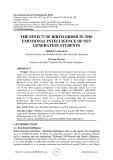
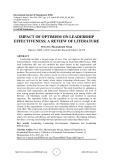
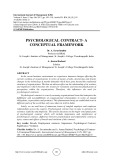


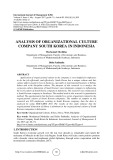

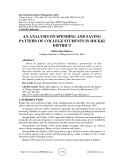


![Câu hỏi ôn tập Tâm lý học quản lý [chuẩn nhất]](https://cdn.tailieu.vn/images/document/thumbnail/2025/20251125/hathunguyen04er@gmail.com/135x160/25191764124376.jpg)
![Cẩm nang chăm sóc và nuôi dạy trẻ tăng động giảm chú ý [chuẩn nhất]](https://cdn.tailieu.vn/images/document/thumbnail/2025/20251118/kimphuong1001/135x160/4241763431998.jpg)


![Sổ tay Hướng dẫn tự chăm sóc trầm cảm [chuẩn nhất]](https://cdn.tailieu.vn/images/document/thumbnail/2025/20251029/kimphuong1001/135x160/3711761720335.jpg)
![Đề cương Tâm lý học xã hội [chuẩn nhất]](https://cdn.tailieu.vn/images/document/thumbnail/2025/20251028/c.dat0606@gmail.com/135x160/99271761707421.jpg)
![Câu hỏi ôn thi Nhập môn khoa học nhận thức [chuẩn nhất]](https://cdn.tailieu.vn/images/document/thumbnail/2025/20251021/aduc03712@gmail.com/135x160/48471761019872.jpg)

![Đề cương môn Tâm lý học sinh tiểu học [chuẩn nhất]](https://cdn.tailieu.vn/images/document/thumbnail/2025/20251007/kimphuong1001/135x160/51781759830425.jpg)



![Tâm lí học lứa tuổi và sư phạm ở tiểu học: Bài thuyết trình [chuẩn nhất]](https://cdn.tailieu.vn/images/document/thumbnail/2025/20250918/vuhoaithuong14@gmail.com/135x160/90941758161117.jpg)
